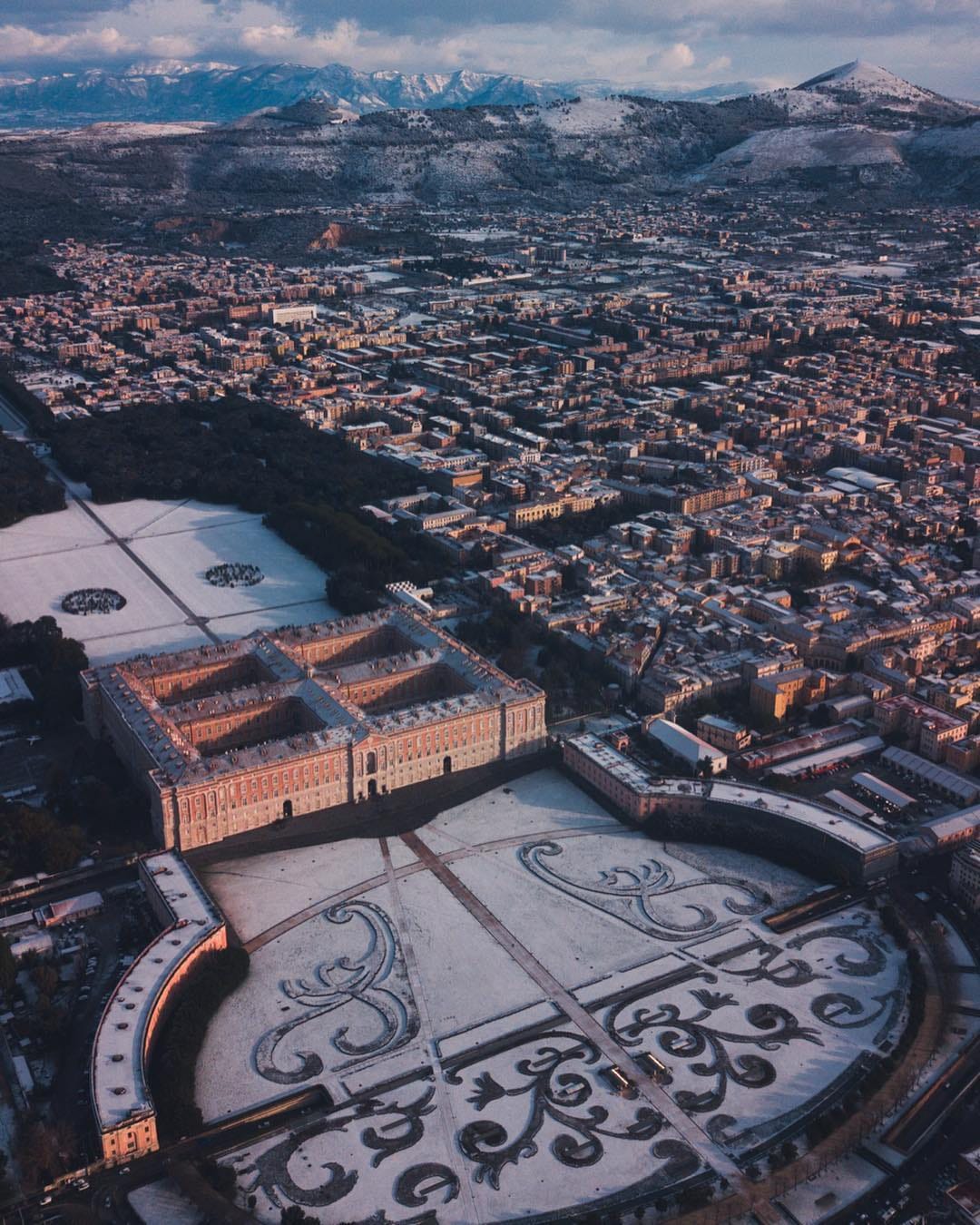The Violin Design of the Royal Palace of Caserta
The story behind one of the most beautiful structures ever conceived...
When the snow blankets the Royal Palace of Caserta, Luigi Vanvitelli's visionary violin design comes to life in all its majestic splendor.
In the face of this extraordinary spectacle, one can't help but wonder: what inspired the creation of something that transcended the visual limits imposed by the technology of its time?
If you've ever been curious about the most unique and awe-inspiring examples of humanity's architectural legacy, look no further. This is a place everyone should visit at least once in their lifetime to truly grasp what we were once capable of.
Built by the House of Bourbon-Two Sicilies, the Royal Palace of Caserta is the largest former royal residence in the world and one of the pinnacles of Italian Baroque.
Nowadays, contemplating the construction of a colossal wonder with such remarkable features seems almost inconceivable:
1200 rooms across 5 floors and 34 staircases
a 120 hectares park
over 2 million cubic meters in volume
floorspace of 138,000 square meters
largest palace erected in Europe during the 18th century
Impressive, isn't it? Well, perhaps not so much when you find out that the title of the world's largest palace belongs to China's Forbidden City in Beijing, built in the 1400s. Covering 728,000 square meters with 9,999 rooms, it reflects the ancient Chinese belief that the god Yù Huáng had a palace with 10,000 rooms. To honor this, they built an earthly palace with 9,999 and a half rooms, just shy of its divine counterpart.
With that in mind, let's take a closer look at this extraordinary Italian jewel...
A Brief History of the Royal Palace of Caserta
In 1751, King Charles III of Spain decided to move the royal residence a few kilometers north of Naples.
He appointed the renowned architect Luigi Vanvitelli to design the new royal palace, resulting in a masterpiece that continues to charm visitors with its enduring beauty and timeless elegance.
It is said that when King Charles first saw Vanvitelli's model — drawn from the inspiration of the Palace of Versailles — it moved him with emotion "fit to tear his heart from his breast."
On January 20, 1752, the King laid the first stone at the construction site that would forever change the fate of the entire region.
Vanvitelli passed away in 1773, and the ambitious project was then continued by his son Carlo and later by other architects, until its completion in 1845.
The Violin-Shaped Garden: Never Seen by Those Who Conceived It
Now, let's dive into the heart of the matter: the graceful silhouette of this extraordinary work of art…
Keep reading with a 7-day free trial
Subscribe to Beauty is truth to keep reading this post and get 7 days of free access to the full post archives.





